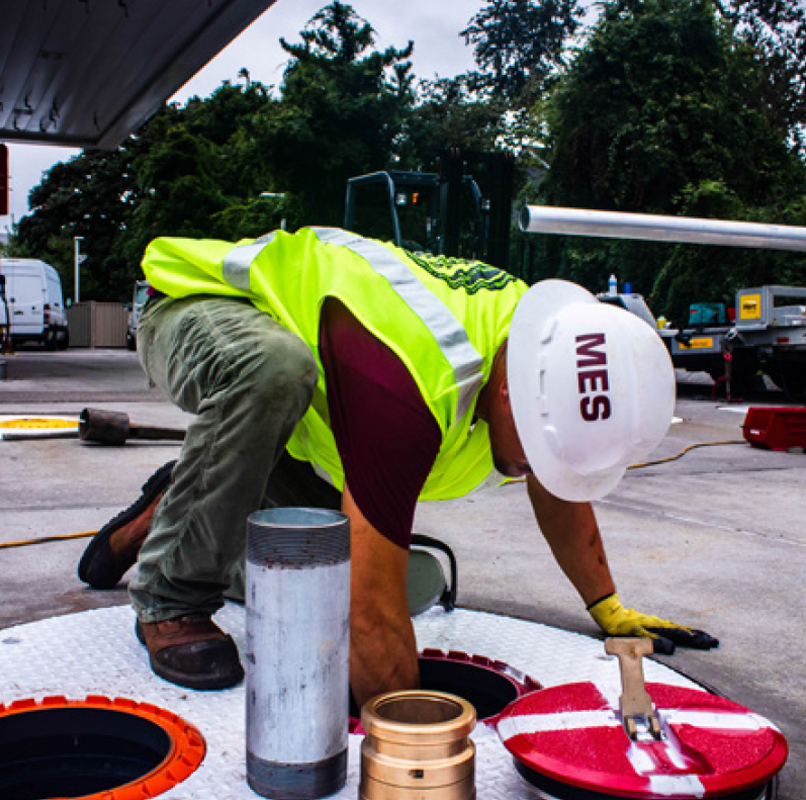Underground Storage Tank Installation
MES completes new underground storage tank installation for a Nassau County Hospital.

Services Provided:
- Excavation
- Shoring Installation
- UST Installation
MES, recently had the opportunity to partner with a Nassau County, Long Island health care network, on a new 4-phase underground storage tank installation at one of their hospitals. From start to finish, this unique project included excavation of the site, shoring installation, and finally the underground storage tank installation.
Services Provided:
- Excavation
- Shoring Installation
- UST Installation
MES, recently had the opportunity to partner with a Nassau County, Long Island health care network, on a new 4-phase underground storage tank installation at one of their hospitals. From start to finish, this unique project included excavation of the site, shoring installation, and finally the underground storage tank installation.
Challenges
Due to the unique location of the hospital, as well as client requirements, there were a few key challenges that had to be accounted for:
- The hospital had to remain fully operational and needed clear access in and out of the premises for patients, staff, and deliveries at all times, with no interruption by MES or the project process.
- The project required a specific planning strategy and more coordination than standard jobs due to the limited access and complex logistics required by the hospital.
- Much of the standard equipment typically used for a project of this nature could not be utilized due to their vibration and sound interference, which could possibly cause complications with patients, procedures, and such.
Process
The project took about 3 months to complete and consisted of 4 different phases.
First, MES had to get interior piping extended to the exterior of the building. Next, we had to maneuver a long trench around the building to run pipes through several boiler rooms. We then began installing the shoring for the underground storage tanks. This involved sourcing a specialty pile driver from Florida, due to the standard pile driver causing too much vibration. Finally, excavating and installing the underground storage tank that would be used to heat the facilities, and meet the needs and standards of the client.
“(The project) involved a lot of planning and coordination, more than what’s required on a normal job,” project manager Dan Kristiansen said. “A lot of logistics to deal with…different types of equipment, out of the ordinary things we had to do and a lot of moving of the material and equipment in and out of the job site because there was limited access.”
This project required support from multiple MES departments and personnel. Specifically, the Operations Team, the Sampling Team and our Construction Teams.
Challenges
Due to the unique location of the hospital, as well as client requirements, there were a few key challenges that had to be accounted for:
- The hospital had to remain fully operational and needed clear access in and out of the premises for patients, staff, and deliveries at all times, with no interruption by MES or the project process.
- The project required a specific planning strategy and more coordination than standard jobs due to the limited access and complex logistics required by the hospital.
- Much of the standard equipment typically used for a project of this nature could not be utilized due to their vibration and sound interference, which could possibly cause complications with patients, procedures, and such.
Process
The project took about 3 months to complete and consisted of 4 different phases.
First, MES had to get interior piping extended to the exterior of the building. Next, we had to maneuver a long trench around the building to run pipes through several boiler rooms. We then began installing the shoring for the underground storage tanks. This involved sourcing a specialty pile driver from Florida, due to the standard pile driver causing too much vibration. Finally, excavating and installing the underground storage tank that would be used to heat the facilities, and meet the needs and standards of the client.
“(The project) involved a lot of planning and coordination, more than what’s required on a normal job,” project manager Dan Kristiansen said. “A lot of logistics to deal with…different types of equipment, out of the ordinary things we had to do and a lot of moving of the material and equipment in and out of the job site because there was limited access.”
This project required support from multiple MES departments and personnel. Specifically, the Operations Team, the Sampling Team and our Construction Teams.

START YOUR PROJECT WITH US
At MES we are inspired by challenges of every scale; working WITH our clients is how we ensure their needs are fulfilled. We pride ourselves in our ability to provide the most advanced technologies for accurate results with minimal disruption, exceeding our clients expectations time and again.




